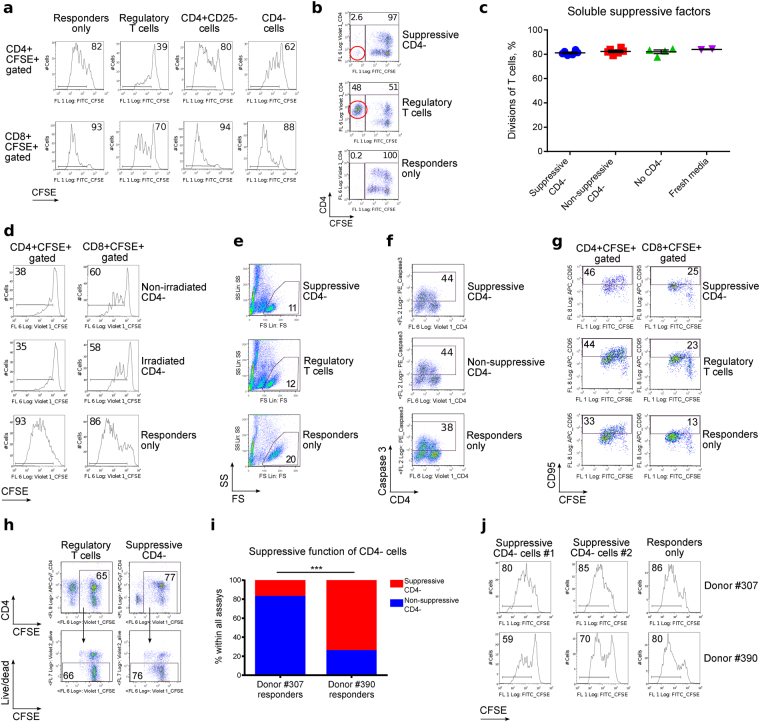Figure 1.
Suppressive human CD4− cells. CFSE-labeled healthy donor PBMC were co-stimulated and incubated ± suppressive cells for 4 days. (a) Addition of Tregs and CD4− PBMC impaired proliferation, whereas CD4+CD25− T cells did not. Data representative of five independent experiments. (b) Live-gated suppressive cells (red circles) show that Treg, but not CD4− cells, survive until the end of the experiment. In both examples, initial ratios of suppressive cells to responder cells were 1:1. Data representative of >40 experiments. (c) Media supernatant from suppression assays was mixed 1:1 with fresh media, and used in new suppression assays to test for soluble suppressive factors, which were not seen (2 experiments, 6 samples tested, p = 0.3063, Kruskal-Wallis test). (d) CD4− cells retained suppressive properties independent of proliferation after γ-irradiation (2 experiments, 2 samples). (E–H) Responder PBMC did not undergo apoptosis or killing by suppressive CD4− cells as shown by: FS/SS gating properties (e), Caspase 3 (f) CD95 expression (g), and live/dead staining (h). Data representative of >40 (e), 2 (f), 2 (g), and 2 (h) independent experiments with at least 2 samples in each one. (i,j) Comparison of different healthy donor responder cells. (i) Pooled data from 48 experiments (p < 0.0001, Fisher’s exact test). (j) Representative data showing donor responder PBMC cells exposed to CD4-depleted cells as suppressors. The CD4− cells were isolated from anxiety/depression (#1) and adult kidney transplant (#2) patients. PBMC from Donor ID#390 were markedly easier to suppress. Presented histograms and dot plots consist of 4,826 ± 421 (mean ± SEM) events.

